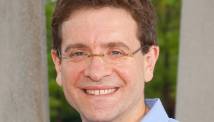Severe Christmas day weather tore across the deep South, spinning off 34 possible tornadoes and killing at least three people in its path, while extreme weather is forecast throughout today for parts of the East Coast.
The storm first pounded Texas, then touched down in Louisiana and blasted through homes in Mississippi. In Mobile, Ala., a wide funnel cloud was barreled across the city as lightning flashed inside like giant Christmas ornaments.
Bill Bunting with the National Weather Service's Severe Storms Prediction Center said that the damage may not yet be done.
"Conditions don't look quite as volatile over a large area as we saw on Christmas day but there will be a risk of tornadoes, some of them could be rather strong, across eastern portions of North Carolina and the northeastern part of South Carolina," he said.
Across the Gulf region, from Texas to Florida, over 280,000 customers are still without power, with 100,000 without power in Little Rock, Ark. alone.
The punishing winds mangled Mobile's graceful ante-bellum homes, and today, dazed residents are picking through debris while rescue crews search for people trapped in the rubble.
"We've got a lot of damage, we've got people hurt," one Mobile resident told ABC News. "We've had homes that are 90 percent destroyed."
Melinda Martinez/The Daily Town Talk/AP Photo
In the Houston area a tree fell onto a pickup truck, killing the driver, ABC affiliate WTRK reported. In Louisiana, a 53-year-old man died when a tree fell on his house, and a 28-year-old woman was killed in a crash on a snowy highway near Fairview, Okla., according to the Associated Press.
At least eight states issued blizzard warnings Tuesday, as the storms made highways dangerously slick heading into one of the busiest travel days of the year.
Tuesday's extreme weather caused an 8-foot deep sinkhole in Vicksburg, Miss. Alma Jackson told ABC News that a concrete tank that was in her backyard fell into the sinkhole.
"It's really very disturbing," she said. "Because it's on Christmas day, and then to see this big hole in the ground and not have any explanation, and not be able to cover it. And the rain is pouring down."
Teresa Mason told ABC News that she and her boyfriend panicked when they saw the tornado heading toward them in Stone County, in southern Mississippi, but she says they were actually saved when a tree fell onto the truck.
"[We] got in the truck and made it out there to the road. And that's when the tornado was over us. And it started jerking us and spinning us, "she said."This tree got us in the truck and kept us from being sucked up into the tornado."
The last time a number of tornadoes hit the Gulf Coast area around Christmas Day was in 2009, when 22 tornadoes struck on Christmas Eve morning, National Weather Service spokesman Chris Vaccaro told ABC News in an email.
The deadliest Christmastime tornado outbreak on record was Dec. 24 to 26, 1982, when 29 tornadoes in Oklahoma, Missouri, Arkansas, Tennessee and Mississippi killed three people and injured 32.
The last killer tornado around Christmas, Vaccaro said, was a Christmas Eve EF4 in Tennessee in 1988, which killed one person and injured seven. EF4 tornadoes can produce winds up to 200 mph.
ABC News' Matt Gutman, Max Golembo and ABC News Radio contributed to this report.













